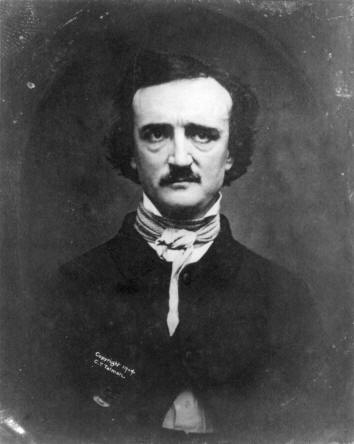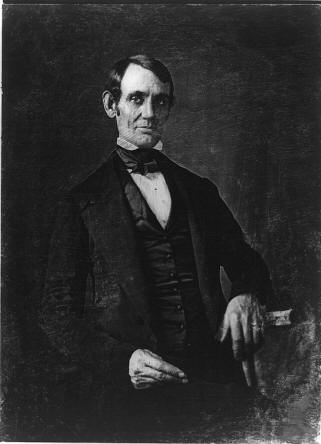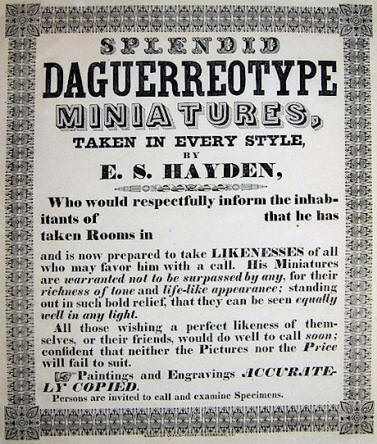|
A photograph of a daguerreotype of Edgar Allan Poe 1848, first published 1880.
Taken by W.S. Hartshorn, Providence, Rhode Island, on November 9th,
1848 The daguerreotype (original French: daguerréotype) is an early type of photograph, developed by Louis Daguerre, in which the image is exposed directly onto a mirror-polished surface of silver bearing a coating of silver halide particles deposited by iodine vapor. In later developments bromine and chlorine vapors were also used, resulting in shorter exposure times. The daguerreotype is a negative image, but the mirrored surface of the metal plate reflects the image and makes it appear positive in the proper light. Thus, daguerreotype is a direct photographic process without the capacity for duplication. The daguerreotype is named after one of its inventors, French artist and chemist Louis J.M. Daguerre, who announced its perfection in 1839 after years of research and collaboration with Joseph Nicéphore Niépce, applying and extending a discovery by Johann Heinrich Schultz (1724): a silver and chalk mixture darkens when exposed to light. The French Academy of Sciences announced the daguerreotype process on January 9 of that year. The announcement of the daguerreotype process in 1839, along with William Henry Fox Talbot's in the same year, marks the date used as the invention of photography.[1] Instead of Daguerre obtaining a French patent, the French government provided a pension for him [2]. In Britain, Miles Berry, acting on Daguerre's behalf, obtained a patent for the daguerreotype process on August 14, 1839. Almost simultaneously, on August 19, 1839, the French government announced the invention a gift "Free to the World". History of Daguerreotype taken from Wikipedia, the free encyclopedia.
Daguerreotype of Abraham Lincoln Advertisement of Traveling Daguerreotype Photographer
Below is a Daguerreotype of San Francisco - Click on it to view larger image in a new window. |




